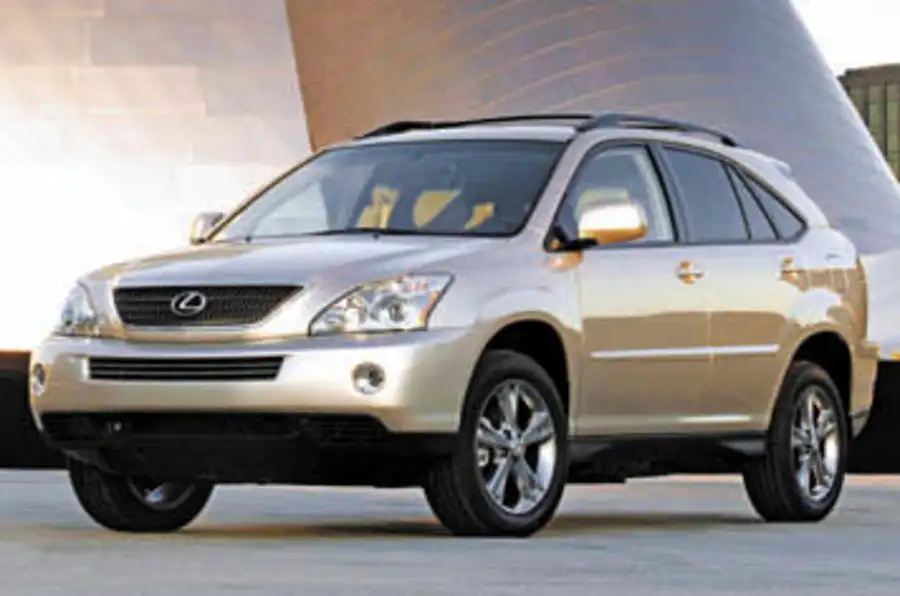Ken Livingstone is not going to like Lexus’ new RX400h hybrid one bit. The London mayor’s campaign to eradicate off-roaders from the capital is based on the premise that they belch CO2 emissions and imbibe unleaded like there’s no tomorrow.
So how is Mr. Livingstone going to deal with a four-wheel drive that produces less CO2 than a 2.0-litre Volkswagen Passat and, with a combined average of 34.8mpg, is less thirsty than a 2.2-litre Vauxhall Vectra?
Toyota’s Car of the Year-winning Prius may have got people thinking about the benefits of petrol-electric hybrid motoring, but it’s this new RX400h from Toyota’s luxo-car division that will have them lusting to have a hybrid on their driveway.
How come? The RX is all about saving the planet, and having fun doing it. Yes, you can drive around town with nothing but the whirr of electric motors. But when you see a gap in the traffic ahead, the combination of a 208bhp V6 and another 165bhp of electric boost turns the Lexus into a something of a road rocket.
In fact, the ‘400’ part of the badge is intended to hint that the RX feels more like it’s powered by a 4.0-litre V8 instead of its 3.3-litre V6. A fair presumption, given that this car can crack 0-62mph in 7.0sec and hit the ton in under 17sec.
To fully understand how the RX400h works you really need a combined degree in engineering and computer science. For starters, there’s not one but three high-efficiency motor/generators, plus a barrage of inverters, converters, controllers and switches. Add a 288-volt nickel-metal hydride battery pack plus a continously variable transmission (CVT) and you have a considerable quantity of technology packed under the RX400h’s skin.
Under the bonnet is a 3.3-litre V6 similar to the one that powers the US-spec RX330, but with its output reduced by around 10 per cent to 208bhp to better suit hybrid characteristics.The first of three electric motors is a small, integrated electric motor/generator that’s used to fire up the V6, which automatically cuts off when the RX comes to a stop, and regulate the CVT’s ratios and charge up the batteries.
Then there’s a primary traction electric motor that can send a supplementary 165bhp to the front wheels, which helps give the car its strong mid-range thrust.
There’s also a 68bhp motor that powers the rear wheels, adding the all-wheel-drive element to the Lexus. And all three motors act as battery-topping generators during regenerative braking and coasting.But the really clever part is Toyota’s Hybrid Synergy Drive technology that orchestrates all this seamless to-ing and fro-ing of power from the V6 and the electric motors to the different wheels.
You don’t fire up the V6 to move off. The key goes in the ignition, you give it a twist and a light on the dash tells you you’re ready to move off. Pull the gear selector down to ‘Drive’, squeeze the throttle and you ease away under eerily-silent electric power.
This is the ‘milk float’ mode. In stop-start traffic, this is what will move you along and boost your economy average. Squeeze the throttle harder and an animated graphic on the dash tells you the big V6 has joined the party. Not that you’d know. There’s no additional noise, no buzzy vibration. Just more power.













Add your comment